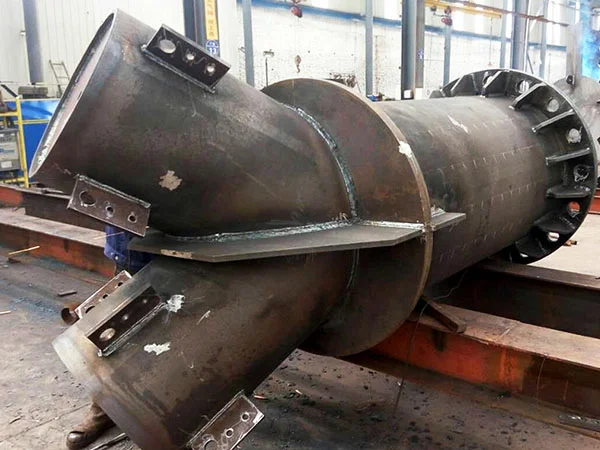Non-standard steel structural components are custom-fabricated steel elements that deviate from the standard, mass-produced shapes and sizes (like I-beams, C-channels, or tubes). They are designed and manufactured to meet the unique, specific requirements of a particular building or project, often due to complex architectural designs, specific load-bearing needs, or challenging site conditions.

Non-standard steel structural components are elements that don't conform to the typical, standardized shapes and dimensions (like standard I-beams, H-beams, and channels) outlined in building codes and material specifications. They're often custom-fabricated for specific architectural or structural requirements, offering greater design flexibility and sometimes more efficient use of materials for a particular application.
1. Flexible and diverse designs
Customized non-standard structures can be created to meet architectural aesthetics and functional requirements, including various curved, twisted, angled, and segmented combinations.
These designs meet the high standards of modern architecture for the integration of aesthetics and structural integrity.
2. High precision requirements
Advanced manufacturing techniques such as CNC cutting, laser cutting, 3D modeling, and BIM design are employed to ensure processing accuracy and structural consistency.
3. Complex Welding and Assembly Processes
Typically requires the welding of multiple types of steel or the connection of dissimilar metals, with stringent construction and quality control requirements.
4. High Load-Bearing Capacity and Wide Adaptability
Structural components are customized in size and cross-section form based on specific load conditions, resulting in more rational structural load distribution.
5. Transportation and installation require professional coordination
Large volume and complex shapes typically require segmented transportation and on-site assembly, necessitating coordination with lifting and positioning equipment.
Public buildings: Non-standard columns, spatial trusses, spiral staircases, and artistic structural components
Bridge engineering: Non-standard main beams, bent-twisted box girders, and curved supports, etc.
Industrial plants: Special-purpose steel platforms, non-standard support frames, track support structures
Curtain wall systems: Irregular curtain wall ribs, non-standard frames, or node connection components
Exhibition/sports venues: Large-span non-standard trusses, cable structure connectors, non-standard tie rods
Transportation hubs/airports: Giant curved columns, curved roof structures, complex node connectors
Creating non-standard components is a much more involved process than simply ordering standard beams:
Conceptual Design: Architects and engineers collaborate to define the required shape and performance.
Detailed Engineering & Analysis: Standard calculations are often insufficient. Finite Element Analysis (FEA) is used to simulate stresses and deflections in the complex shape to ensure it is safe and efficient.
Digital Modeling & Detailing: A highly detailed 3D model is created using software like Tekla Structures or Revit. This model serves as the "single source of truth," containing all the geometric data, weld specifications, and connection details.
Fabrication: The 3D model data is sent directly to CNC (Computer Numerical Control) machines at a specialized fabrication shop. This involves precision cutting, bending, assembly in custom jigs, and expert welding.
Quality Control & Testing: Due to their critical nature, these components undergo rigorous inspection. This includes dimensional checks and Non-Destructive Testing (NDT) of welds, such as ultrasonic or radiographic testing, to ensure there are no internal flaws.
Logistics & Erection: Custom transportation (often oversized loads) and specialized lifting plans are required to get the component to the site and erect it safely and accurately.

Create the greatest value for customers
Provide the best quality products and services
+8618800767079
info@hcggsteel.com
No.1 Shuangxiang Road, Luoxin Industrial Park, Luoyang City